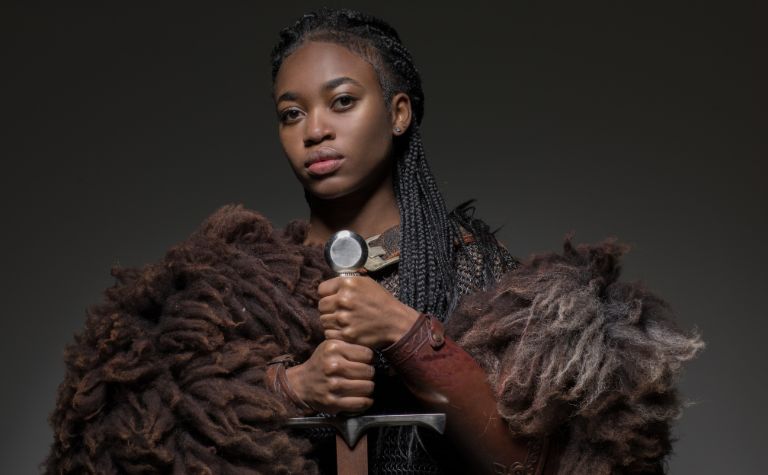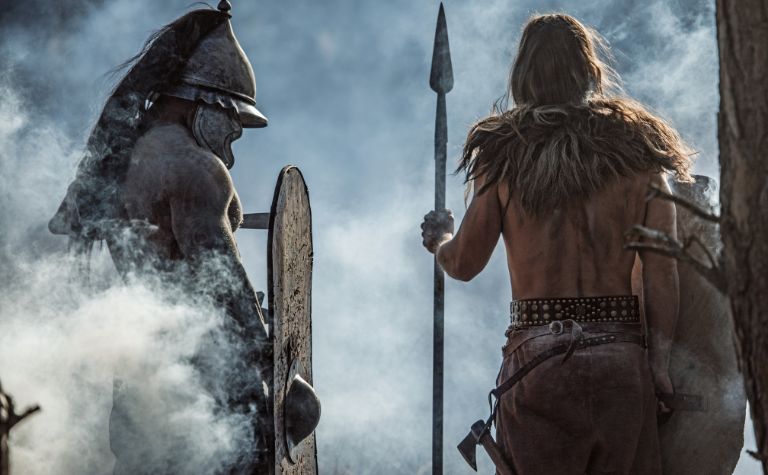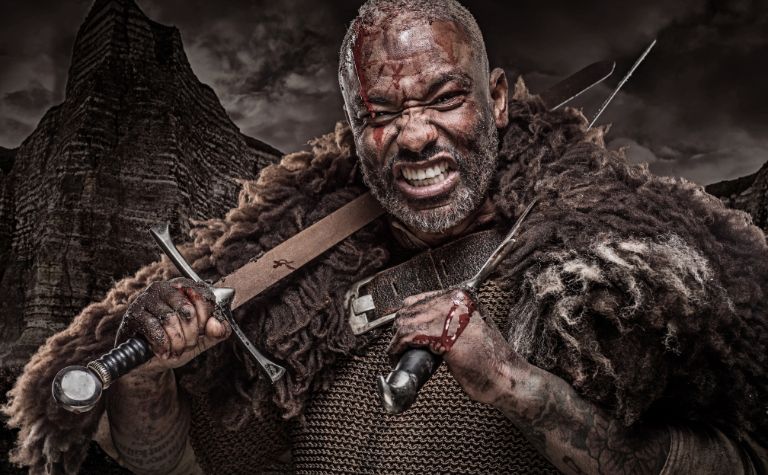Most contemporary representations portray Vikings as exclusively Scandinavian in their ethnicity, but is the image of the blonde, blue-eyed Viking accurate?
Or does it derive from modern European racial theories which conceal the ethnic and racial diversity of early medieval Norse society?
There were African Vikings, although their numbers were likely small. Norse society was more diverse than is usually portrayed, and black and brown people could assimilate into it.
These people would have been taken to Scandinavia as slaves or may have been fleeing persecution elsewhere.
This article will explain how Norse society came to have a greater diversity than is otherwise suggested and answer questions about the role of black and brown peoples in Norse society.

Who Was the First Black Viking?
The question of who the first black Viking was is impossible to answer.
The Norse tradition was primarily oral and dealt mainly with kings, heroes, and other larger-than-life figures.
Within the available texts that derive from it, there is no record of the first black Viking.
The Norse tradition was primarily an oral one. Although the Norse had a script that they used to record their famous runic inscriptions, they did not leave behind extensive records of day-to-day events or an objective record of historical occurrences.
Norse culture produced some of the earliest examples of epic literature in Europe.
Their legends–recorded in the Icelandic sagas, written between the 12th and 15th centuries A.D.–narrate stories of great heroes and their adventures.
There are also surviving transcriptions of the skaldic poetry they produced. [1]
However, these sources do not concern themselves with questions such as who the first black Viking was.
Moreover, the small numbers of black Vikings were likely to have assimilated into the culture over generations or have been slaves.
In neither of these cases would the first black Viking have made it into the legends.
Thus, there is no record of the first black Viking in the surviving texts on the Vikings, and it is unlikely that such information will be recoverable at any time in the future.

Did the Vikings Trade with Africa?
The Vikings did trade with Africa. Trade routes they established spanned not just the North Atlantic and Baltic but also the Mediterranean Sea.
Furthermore, there are historical records of Vikings arriving on the North African coast multiple times in the late 9th century.
The Vikings were great shipbuilders and explorers. Apart from raiding, they were also settlers and traders who traveled through much of Europe and Central Asia, trading goods and slaves.
Viking ships also made it as far as North America and North Africa. [2]
Norwegian Vikings traveled westwards to Scotland, Ireland, and England and southwards to France and the Mediterranean.
They occupied parts of Greenland, Iceland, and the Faroe Islands and reached as far west as Newfoundland in present-day Canada. [3]
The Danes raided French, Spanish, and Italian towns and dominated large parts of North East England. Swedish Vikings sailed down the Baltic Sea and Russian rivers, making it as far as Constantinople.
They ruled parts of present-day Ukraine and provided bodyguards to the Byzantine emperors.
That the Vikings used Mediterranean trading routes has been clearly established.
This makes it highly likely that they had some trade with towns along the North African coast.
There is also at least one recorded instance of their presence in Morocco.
This incident happened after the Vikings were rebuffed by the Andalusians of present-day Spain in 859 A.D., many of whom were black or Arab, incidentally.
Forced to sail down the Mediterranean Sea, they arrived in Morocco. [4]
Later, during the 860s, they returned to battle the Berber kings of North Africa.
Given their familiarity with this route, it is highly likely that the Vikings conducted trade with North Africans at various points during their travels.

Was There a Black Viking Queen?
There is no evidence that there was ever a black Viking Queen. However, at least one Viking queen–Ljufvina, wife of King Hjor of Avaldsnes in present-day Norway–was of Mongolian descent and described as having dark skin.
Although there are recorded instances of black Vikings, there is no evidence that there ever was a black Viking queen.
In any case, women did not wield much political power in Norse society, despite the relatively equitable gender relations for the time that they enjoyed. [5]
There is, however, at least one instance of a brown Viking queen from a Norse kingdom in Present-day Norway.
Queen Ljufvina, the wife of King Hjor of Avaldsnes, has clearly been described as having black skin. In all likelihood, she and her twin sons were both of Mongolian heritage. [6]
Despite the lack of evidence of black royalty, Viking society was much more diverse than commonly portrayed.
This is understandable, considering how far the Vikings traveled, the number of different cultures they engaged with, and the extent of the slave trade of the time, including the sale of women as concubines or brides.
The Vikings also established settlements in many parts of Europe, including:
- England
- France
- Parts of present-day Ukraine
In these places, local populations mixed significantly with the Vikings. To date, many inhabitants of these countries have some Viking ancestry.
In recent times, scholars have also argued that human populations were much more mobile in the middle ages than is generally assumed.
And that the Vikings, in particular, exchanged populations with other cultures in significant numbers. [7]
Besides, the North African, Andalusian, and Byzantine kingdoms would all have had significant populations of black and brown people who would have come into contact with Europeans regularly or might have traveled to parts of Northern Europe themselves.
These factors explain how, along with other European populations, black and brown peoples also ended up in present-day Scandinavia.
More recently, genetic studies have confirmed that Viking populations were much less ethnically homogenous than was earlier thought.
In light of these findings, it can only be assumed that the depiction of Vikings as ethnically homogenous derives from early European theories of racial purity.
Conclusion
Viking society was more diverse than it is usually depicted to be and likely included a small number of Africans among other ethnic groups.
